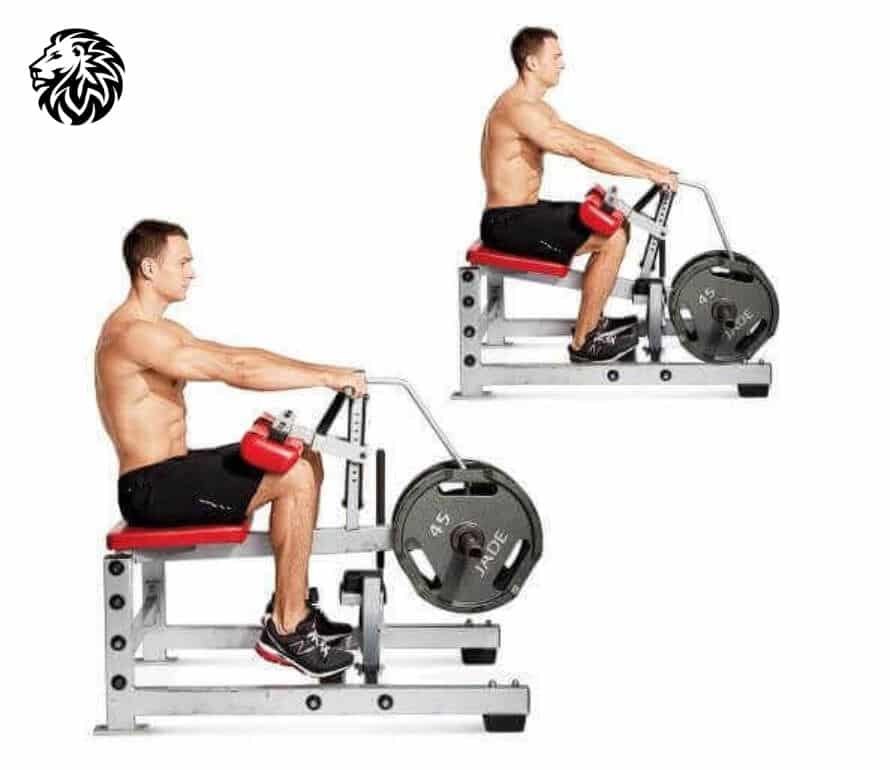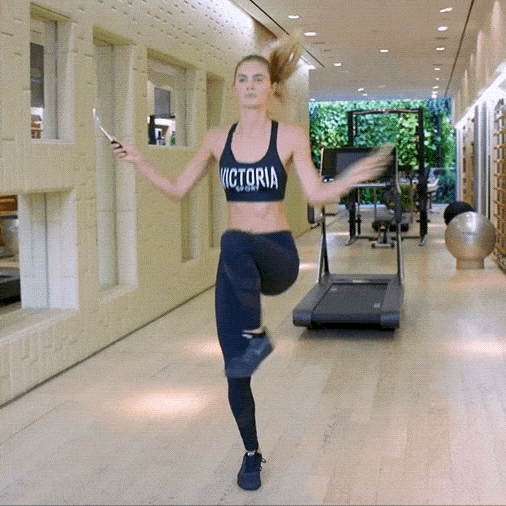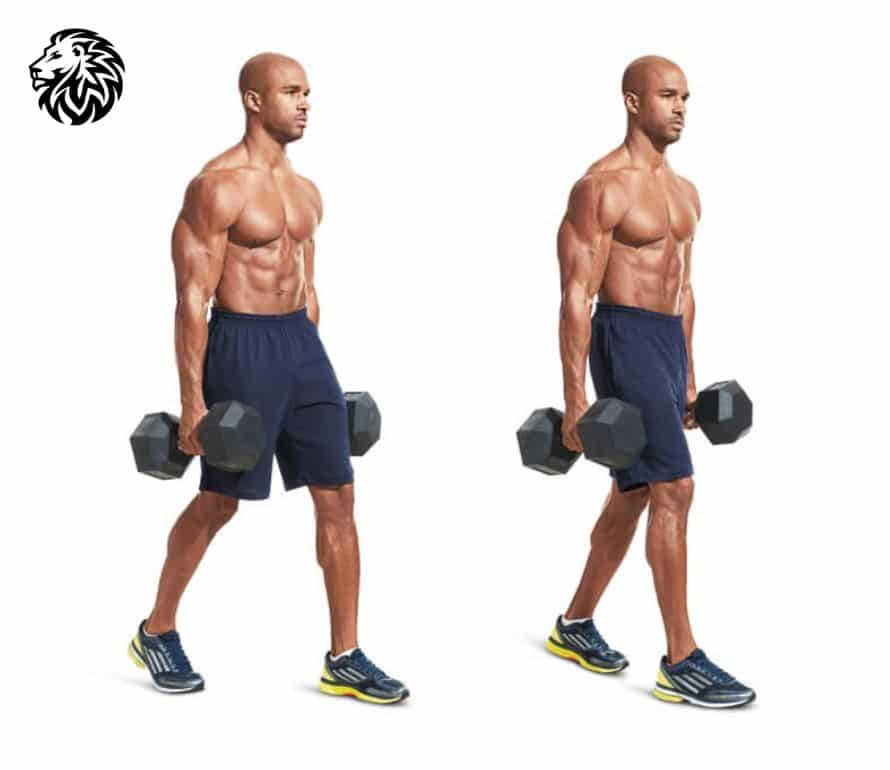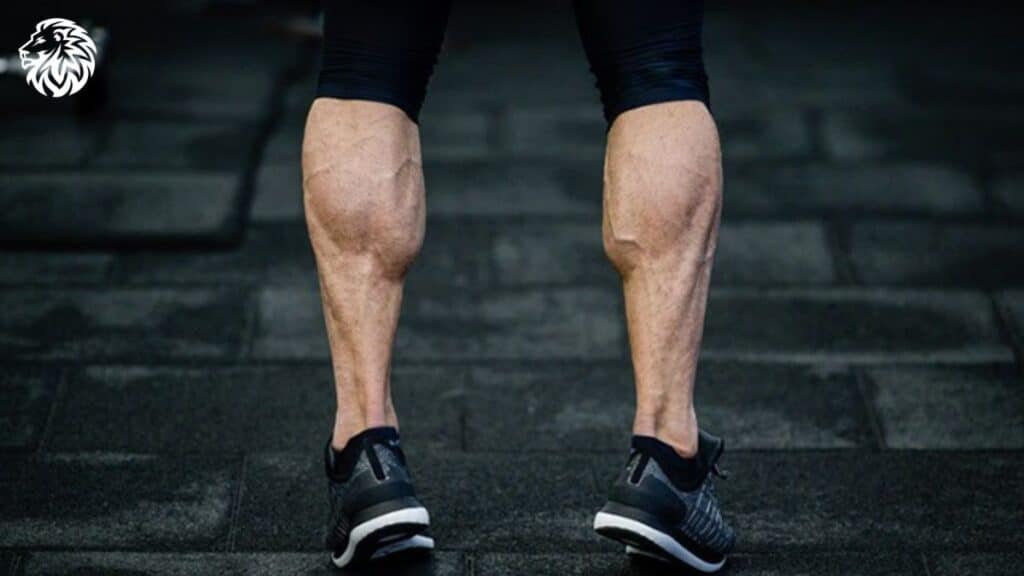Let’s imagine our legs as the pillars of a grand building, holding up everything above with grace and power. The heart of these pillars? Our calf muscles. Think of them as the unsung heroes that carry us – whether we’re chasing after a bus, dancing in our living room, or simply standing still, lost in thought. They’re not just there to look good in shorts or help us score that game-winning goal. They’re essential to how we move and are our body’s own protective mechanism against mishaps.
Now, when you take a closer look at these heroes, you’ll find two main muscles. First up is the gastrocnemius – that’s the one that gives our calves that lovely curve and helps us make those quick, show-stopping moves like a jump or sprint. Nestled right beneath it is the soleus, more low-profile but just as mighty. This one’s got our back when we’re strolling through a park or standing in line at our favorite coffee shop. Together, like a perfectly choreographed dance duo, they help us push forward, keep our balance, and take life’s little bumps in stride, ensuring our legs remain the sturdy pillars we depend on every day.
The 5 Best Calf Exercises
1. Standing Calf Raises

Description and Technique: Standing calf raises are a quintessential exercise to isolate and strengthen the gastrocnemius and soleus muscles. To perform this exercise:
- Begin by standing upright with your feet hip-width apart. You can do this exercise barefoot or with shoes, depending on your comfort.
- Keep your core engaged, shoulders relaxed, and gaze forward.
- Slowly raise your heels off the ground by pushing through the balls of your feet, lifting as high as possible. You should feel a strong contraction in your calf muscles.
- Pause briefly at the top of the movement.
- Slowly lower your heels back to the ground, maintaining control throughout the movement.
Variations:
- Using Dumbbells: Holding a dumbbell in each hand can add resistance, making the exercise more challenging. Keep the dumbbells by your side with your palms facing inward. Follow the same technique as described above.
- Edge of a Step: Performing standing calf raises at the edge of a step allows for a greater range of motion. Stand on the edge of a step or platform with your heels hanging off. As you raise your heels, you’ll be able to lift higher than ground level. When lowering, allow your heels to dip slightly below the level of the step. This variation provides a deeper stretch and enhanced muscle engagement.
- Single Leg Calf Raise: This variation targets one leg at a time. Lift one foot off the ground and perform the raise using only the other foot. This can also be combined with the edge of a step for an added challenge.
2. Seated Calf Raises

Description and Technique: Seated calf raises primarily target the soleus muscle. Unlike the standing calf raise, which engages both the gastrocnemius and soleus, the seated position places more emphasis on the soleus due to the bent knee position.
- Sit on a seated calf raise machine or a bench with a weight (like a dumbbell or weight plate) placed on your thighs, near your knees.
- Position your feet hip-width apart with the balls of your feet on a raised surface, like a block or step. Your heels should hang off the edge.
- Keeping the weight stable on your thighs, slowly raise your heels by pushing through the balls of your feet.
- At the peak of the lift, pause briefly to contract the calf muscles.
- Slowly lower your heels down below the level of the step or block for a full stretch.
Highlighting the Focus on the Soleus Muscle: The soleus muscle is more active during endurance activities, such as walking or standing. By targeting the soleus muscle, seated calf raises can help improve stamina in the calves, making it a valuable exercise for long-distance runners or those who spend a lot of time on their feet.
3. Jump Rope

Benefits: Jumping rope is not only an excellent cardiovascular workout but also a potent calf-strengthening exercise. The repetitive hopping motion places a consistent demand on the calf muscles, enhancing both their strength and endurance. Additionally, jumping rope can improve ankle stability, coordination, and overall lower body agility.
Technique Tips for Maximizing Calf Muscle Engagement:
- Stay Light on Your Feet: Aim to bounce on the balls of your feet, keeping your heels off the ground. This constant engagement will give your calves a great workout.
- Maintain Upright Posture: Keep your core engaged, shoulders relaxed, and look straight ahead. This alignment will ensure that the calves are doing the majority of the work.
- Use Your Wrists: Rotate the rope using your wrists rather than your arms. This will allow you to maintain a consistent rhythm and focus on the calf engagement.
- Keep Jumps Low: You don’t need to jump high; small, quick hops will target the calf muscles more effectively and reduce the risk of fatigue.
4. Box Jumps

How Plyometrics Can Enhance Calf Strength and Power: Plyometric exercises, like box jumps, involve rapid stretching followed by a quick contraction of the muscles. This explosive action trains the muscles to generate maximum force in a short amount of time. For the calves, this means improved power and responsiveness, essential for athletic activities that involve running, jumping, and quick direction changes.
Proper Form and Progression Methods:
- Starting Position: Stand in front of a sturdy box or platform with feet shoulder-width apart. Your arms should be relaxed by your sides.
- Jump: Begin by lowering into a shallow squat, swinging your arms back. Then, in a swift motion, swing your arms forward and push through the balls of your feet, propelling yourself onto the box. Aim to land softly, with your knees slightly bent.
- Descent: Step back down from the box one foot at a time, rather than jumping down, to reduce impact on the joints.
- Progression Methods:
- Height: As you become more comfortable, gradually increase the height of the box.
- Add Weight: Hold light dumbbells in your hands or wear a weighted vest for added resistance.
- Vary the Jump: Incorporate lateral or rotational box jumps to challenge different muscles and improve agility.
5. Farmer’s Walk on Toes

Emphasis on Both Calf Strength and Overall Stability: Farmer’s walk on toes combines the benefits of a traditional farmer’s walk with the engagement of a calf raise. This exercise not only strengthens the calves but also challenges overall stability, grip strength, and core engagement.
Instructions and Benefits:
- Starting Position: Hold a dumbbell or kettlebell in each hand, standing upright with your feet hip-width apart.
- Walking on Toes: Engage your core, and lift your heels off the ground so you are standing on your toes. Maintain this position throughout the exercise.
- Move Forward: While staying on your toes, walk forward, taking short and controlled steps. Ensure your core remains tight, and your back is straight.
- Duration: Aim to walk for a set distance or time, such as 30 seconds to a minute, then rest and repeat.
Benefits:
- Calf Strength: The sustained time on your toes means the calf muscles are under tension for an extended period, leading to increased strength and endurance.
- Enhanced Stability: Walking on toes challenges your balance, forcing stabilizer muscles in the ankles and feet to work harder.
- Full Body Workout: Beyond the calves, the farmer’s walk engages the shoulders, forearms, and core, providing a comprehensive workout.
Incorporating Calf Exercises into Your Routine

Frequency, Sets, and Reps Recommendations:
- Frequency: Aim to train your calves 2 to 3 times per week. Given their endurance-oriented nature and frequent use in daily activities, calves can often handle a slightly higher training frequency than other muscle groups.
- Sets and Reps:
- For strength and hypertrophy: 3-4 sets of 6-12 repetitions with heavier weights.
- For endurance and toning: 3-4 sets of 15-25 repetitions with lighter weights or body weight.
- Plyometric exercises like box jumps: 3-4 sets of 10-20 jumps, ensuring quality of movement over quantity.
- Rest: Allow 48 to 72 hours between calf-specific workouts to ensure adequate recovery.
Importance of Combining Strength Exercises with Flexibility Exercises for Balanced Development:
- Injury Prevention: Tight calf muscles can lead to a range of issues, from simple strains to conditions like plantar fasciitis. Incorporating flexibility exercises can reduce the risk of these problems.
- Improved Performance: A balanced combination of strength and flexibility allows for a fuller range of motion, which can enhance athletic performance and daily functionality.
- Better Muscle Definition: Flexibility training can aid in muscle elongation, which, when combined with strength training, can lead to more defined calf muscles.
- Reduced Muscle Imbalance: Ensuring flexibility can help counteract muscle imbalances. For instance, if the gastrocnemius is far stronger than the soleus (or vice versa), it can lead to postural issues or increase injury risk.
Recommended Flexibility Exercises:
- Standing Calf Stretch: Place the ball of one foot against a wall or step with the heel on the ground. Lean forward until a stretch is felt in the calf. Hold for 20-30 seconds and switch sides.
- Downward Dog: This yoga pose not only stretches the calves but also the hamstrings and back. Start in a push-up position, then lift your hips up and back, pushing your heels towards the ground.
- Seated Calf Stretch: Sit with legs extended. Loop a towel or resistance band around the ball of one foot and gently pull towards you, keeping the knee straight.
By consistently incorporating both strength and flexibility exercises into your calf training routine, you ensure comprehensive muscle development, improved functionality, and a reduced risk of injury.
Tips for Avoiding Calf Strains and Injuries

1. Warm-up and Stretching Suggestions:
- Dynamic Warm-up: Before diving into calf-specific exercises, start with a general warm-up to increase blood flow and prepare the muscles. This could include 5-10 minutes of light cardio, such as brisk walking or jogging.
- Dynamic Stretching: After the general warm-up, incorporate movements like ankle circles, toe taps, or leg swings to increase mobility in the lower leg region.
- Static Stretching Post-Workout: After your workout, when the muscles are warm, is the ideal time for static stretching. Hold each stretch for 20-30 seconds, ensuring you feel a gentle pull, not pain. Examples include the standing calf stretch against a wall or the seated calf stretch using a band.
2. Recognizing Signs of Overuse:
- Persistent Soreness: While some muscle soreness post-workout is typical, if it persists beyond 48-72 hours, it might be a sign of overuse.
- Tightness or Stiffness: If your calves feel consistently tight or stiff, even after stretching, this could indicate strain or fatigue.
- Swelling or Bruising: Any visual changes like swelling or bruising around the calf area should be taken seriously.
- Sharp, Localized Pain: A sudden sharp pain during an activity, especially if it causes you to stop, may indicate a strain or tear.
3. The Importance of Rest and Recovery:
- Rest Days: Even though calves can handle frequent training, it’s essential to incorporate rest days to allow the muscles to recover and grow.
- Active Recovery: On non-training days, consider low-intensity activities like walking or swimming. These can help increase blood flow to the muscles, aiding in recovery without causing further strain.
- Massage and Foam Rolling: Regularly massaging or foam rolling the calves can help release tightness and prevent potential muscle adhesions that can limit mobility.
- Hydration and Nutrition: Drink plenty of water to help with muscle recovery and consume a balanced diet rich in protein, vitamins, and minerals to support muscle repair and growth.
- Listen to Your Body: If you experience any signs of strain or injury, it’s crucial to listen to your body and give it the rest it needs. If pain persists, consider consulting a physical therapist or healthcare professional.
Incorporating these tips and paying attention to the body’s signals will significantly reduce the risk of calf strains and injuries, ensuring consistent progress in your training endeavors.
Conclusion
The calves, though sometimes overlooked, are the pillars of our lower body, playing a pivotal role in everyday movements, athletic endeavors, and overall stability. Strong calf muscles not only enhance our performance but also safeguard against potential injuries, ensuring that we can move with both power and grace. Whether you’re an athlete aiming for peak performance or someone simply wanting to navigate daily life with ease, cultivating robust calves is indispensable.
However, as with any fitness journey, the keys to success are consistency and patience. It’s not about how quickly you can see results, but about the dedication to the process and the understanding that true strength comes with time. Gradually progressing in your training, listening to your body, and valuing both recovery and effort will lead to resilient, powerful calf muscles, ready to support you in every step of your journey. Embrace the journey, trust the process, and celebrate the strides you make towards a healthier, more powerful lower body.







